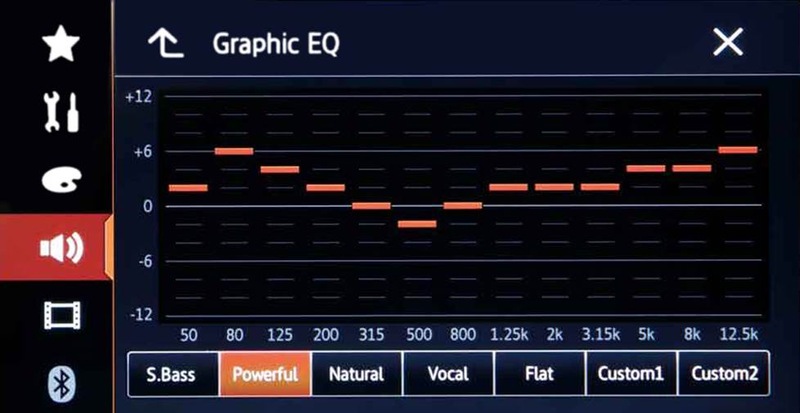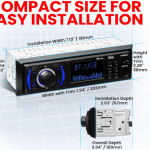Tuning your car stereo for the best sound can transform your driving experience, making every trip more enjoyable. Whether you’re a casual listener or an audiophile, optimizing your car stereo settings can significantly enhance audio quality. This comprehensive guide will walk you through the steps to tune your car stereo for the best sound, covering everything from basic adjustments to advanced techniques.
Understanding Your Car Stereo System
Before diving into the tuning process, it’s important to understand the components of your car stereo system:
- Head Unit: The main control center for your car’s audio system. It includes the radio, CD player, and various input options.
- Amplifier: Boosts the audio signal to drive the speakers. Some systems have built-in amplifiers, while others use external amps.
- Speakers: Convert the audio signal into sound. They come in various sizes and types, including tweeters (high frequencies), midrange speakers, and subwoofers (low frequencies).
Basic Tuning Steps
1. Set the Head Unit to Flat
Start by setting your head unit’s equalizer (EQ) to a flat setting. This means all frequencies (bass, mid, and treble) are set to zero or the middle position. This provides a neutral starting point for tuning.
2. Adjust the Balance and Fader
The balance control adjusts the left-to-right sound distribution, while the fader controls the front-to-rear distribution. Set these controls to the center position to ensure all speakers are contributing equally to the soundstage.
3. Set the Volume Level
Play a familiar track and set the volume to a moderate level. This should be loud enough to hear details clearly but not so loud that it distorts the sound.
Fine-Tuning the Sound
4. Adjust the Equalizer
The EQ allows you to boost or cut specific frequency ranges. Here’s a general guideline for tuning:
- Bass (20-250 Hz): Adjust this range to enhance or reduce the low frequencies. Avoid over-boosting the bass, as it can cause distortion.
- Midrange (250 Hz-4 kHz): This range covers vocals and most instruments. Adjust to bring out clarity and detail.
- Treble (4-20 kHz): Adjust this range to enhance or reduce high frequencies. Too much treble can make the sound harsh, while too little can make it dull.
5. Use Pre-set EQ Settings (if available)
Many head units offer pre-set EQ settings, such as Rock, Pop, Jazz, and Classical. These can be a good starting point, but you may need to fine-tune them to match your preferences.
6. Balance the Soundstage
The goal is to create a balanced soundstage where the music appears to come from a central point in front of you. Adjust the balance and fader controls as needed to achieve this effect. Some head units offer time alignment features that can help by delaying the sound from speakers closer to you.
7. Fine-Tune with a Test Track
Choose a high-quality test track that covers a wide frequency range and is well-recorded. Listen carefully and make small adjustments to the EQ, balance, and fader settings to fine-tune the sound. Pay attention to the clarity of vocals, the punch of the bass, and the crispness of the highs.
Advanced Tuning Techniques
8. Use an External Equalizer
If your head unit’s built-in EQ is limited, consider adding an external equalizer. This allows for more precise control over a wider range of frequencies. External EQs often provide additional bands for fine-tuning specific frequency ranges.
9. Add an Amplifier
An external amplifier can significantly improve sound quality by providing more power and cleaner amplification. This reduces distortion and allows you to play music at higher volumes without sacrificing quality. Match the amplifier’s power rating with your speakers to avoid damage.
10. Upgrade Your Speakers
Stock speakers are often of lower quality than aftermarket options. Upgrading to high-quality speakers can greatly enhance sound clarity and detail. Consider component speakers for better separation of high and low frequencies.
11. Use Sound Deadening Materials
Road noise and vibrations can interfere with sound quality. Installing sound deadening materials in your car’s doors, floor, and trunk can reduce noise and improve the overall audio experience. This helps to isolate the sound inside the car and enhances bass response.
12. Tune with an RTA (Real-Time Analyzer)
A Real-Time Analyzer (RTA) can help you visualize the frequency response of your car audio system. By using an RTA app or device, you can see which frequencies are over or under-represented and adjust the EQ accordingly. This tool provides a more scientific approach to tuning.
Common Mistakes to Avoid
13. Over-Boosting Frequencies
One of the most common mistakes is over-boosting certain frequencies, especially the bass. This can cause distortion and muddy the overall sound. Make subtle adjustments and listen carefully to avoid this issue.
14. Ignoring Speaker Placement
Speaker placement has a significant impact on sound quality. Ensure your speakers are correctly installed and angled towards the listening area. Tweeters should be positioned at ear level for optimal clarity.
15. Neglecting the Subwoofer Settings
If you have a subwoofer, make sure it’s properly integrated with the rest of the system. Adjust the crossover frequency so that the subwoofer handles the low frequencies while the other speakers cover the mids and highs. Balance the subwoofer’s volume to complement the overall sound without overpowering it.
Conclusion
Tuning your car stereo for the best sound involves a combination of basic adjustments, fine-tuning, and advanced techniques. By understanding the components of your system and following these steps, you can significantly enhance your audio experience. Remember to start with a flat EQ, balance the soundstage, and make incremental adjustments. For the best results, consider using external equalizers, amplifiers, and high-quality speakers. Avoid common mistakes like over-boosting frequencies and neglecting speaker placement. With patience and careful tuning, you can achieve a rich, balanced sound that transforms your driving experience. Happy listening!









